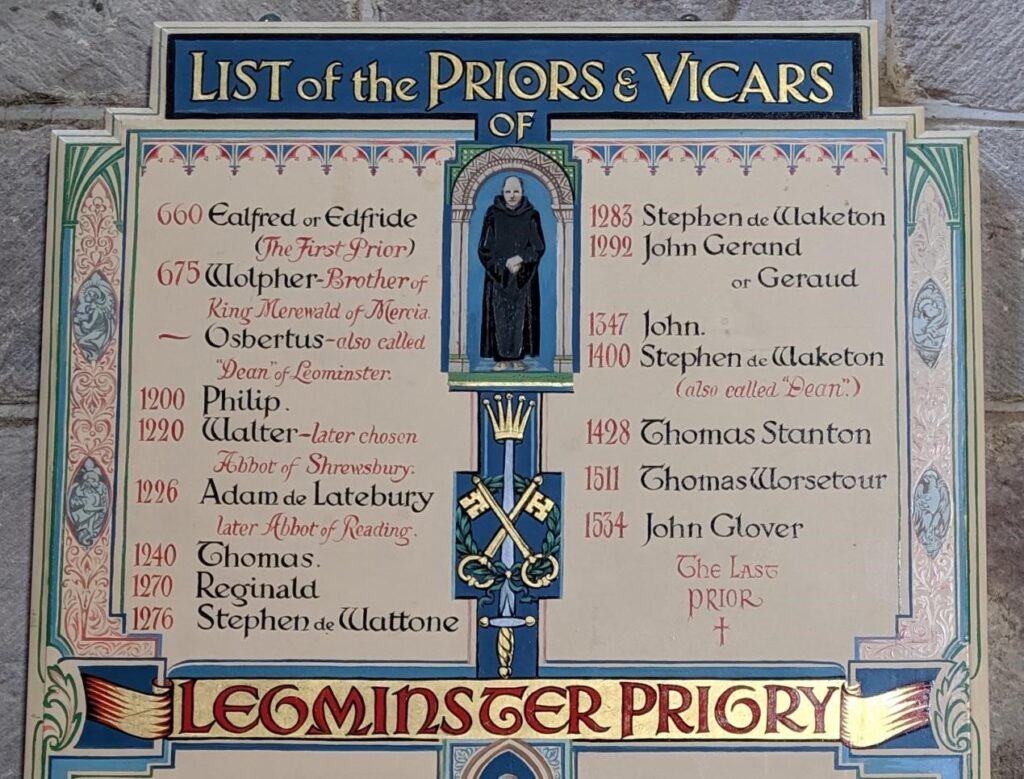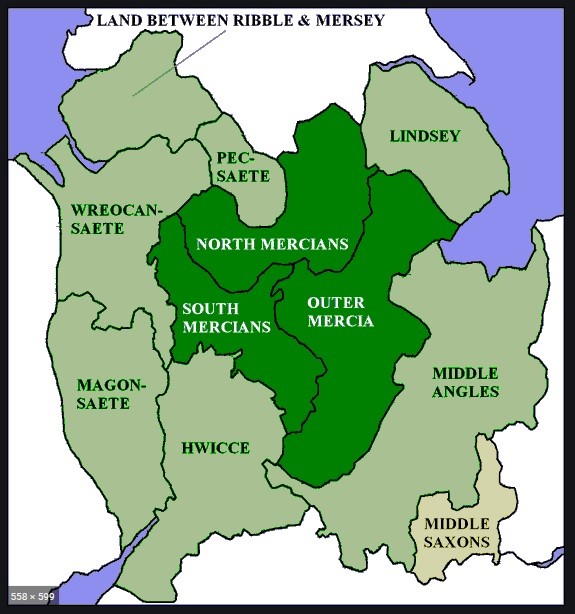Slap bang in the middle of the Dark Ages a small kingdom existed in north Herefordshire and south Shropshire. There are very few written records, but those that survive can be used to piece together a few details. The kingdom was that of the Magonsǣte, and the only king we know of was called Merewalh.
There are a couple of clues available in Leominster, and some information from Kingsland.
At the north end of Leominster, there is a small road called Merwald Close. I know a little about my local history, and so was convinced that this was a corruption of the name of the man who founded Leominster Priory, Merewald (Merewalh). The 2nd Prior was Wolfer, Merewalh’s brother.

This from the Kingsland parish plan: “There was an early settlement at Street and the first king of this area, Merewalh, built his palace in Kingsland in c.660.” This is another indication that he was some sort of local nobility.
The name
Merewalh has two elements of Old English. The fist being something like ‘Great’ and the second indicating that he was Welsh. Put them together and you get, ‘Great Welshman’. Whoever he was, he must have been a man of some distinction, even though he has left few traces in the historical record.
The kingdom

From The Thegns of Mercia
The first port of call in looking something up in 7th century England is the Anglo-Saxon Chronicle. The only mention of Merewalh here is in the entry for 656, when he is said to be the brother of King Wulfhere, though that may not mean brother in the normal sense, as the name indicates that he was a Briton rather than a Saxon.
Another document that could have provided some more detail is one known as the Tribal Hidage, which consists of a list of territories controlled by the Mercians and a notional level of tribute to be paid. Unfortunately, the name Magonsaete does not appear on this list, though one which is probably the same territory is ‘Westernae’. However, the name Wreocansaete does appear, probably meaning that of the people of Wroxeter, the Roman city of Viriconium. If this is true, then Magonsaete could refer to the people of Magnis, the Roman town at Kenchester, to the west of Hereford.
Doing some further search, I came across more references to Merewalh in the Kentish Royal Legend. In this he appears as a son of King Penda of Mercia, and is reported as marrying a Kentish princess, Ermenburga, or Domne Eafe. She later achieved sainthood, as did her daughter, St Mildburga, who is credited with founding the monastery of Much Wenlock. Two other daughters were also sanctified, Mildrith and Mildgith, and a son, Merefin, is described in the legend as “the holy child” died as a youth. It is, of course, necessary to take such legends and saints’ lives with an entire salt mine. However, taken with the other evidence, some sort of picture appears about the man and the kingdom. The last known ruler, Mildfrith, son of Merewalh, died c.735 and it would appear that the province became a Mercian administrative district after that date, and the name eventually became forgotten.
There is a PhD thesis from Birmingham by Sheila Waddington, concerning the pre-Mercian takeover of Herefordshire which can be downloaded if you wish to explore this subject more. https://etheses.bham.ac.uk/id/eprint/4738/
Sources:
Kings and Kingdoms of early Anglo-Saxon England, by Barbara Yorke, ISBN 978-0415166393
https://en.wikipedia.org/wiki/List_of_monarchs_of_Mercia
https://en.wikipedia.org/wiki/History_of_Herefordshire
https://en.wikipedia.org/wiki/Kentish_Royal_Legend
https://www.historyfiles.co.uk/KingListsBritain/EnglandMagonset.htm
